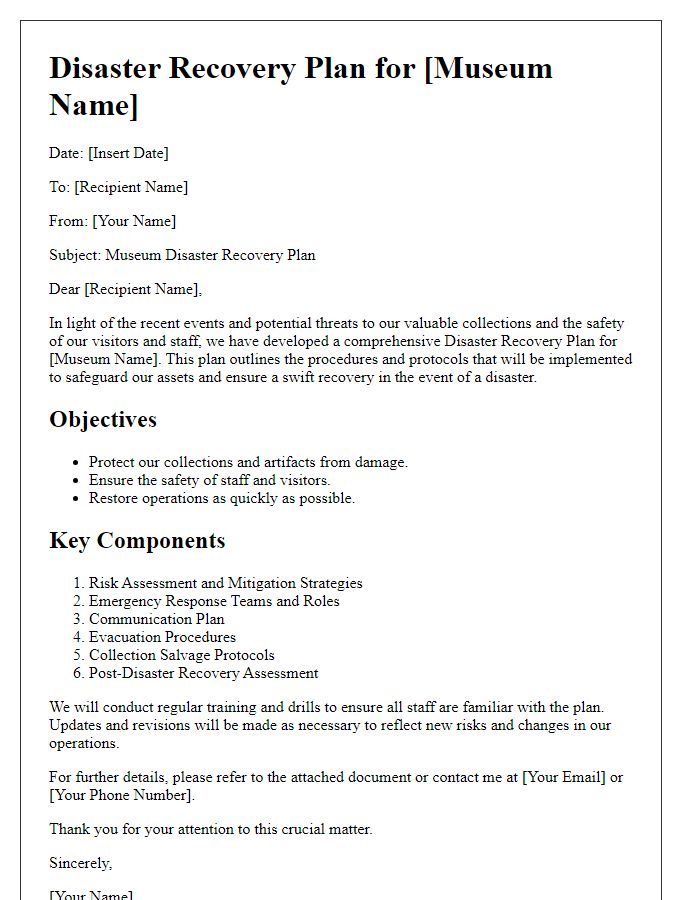In today's ever-evolving world, having a robust emergency plan for museums is more crucial than ever. These sanctuaries of culture and history must be prepared to protect their priceless artifacts and ensure the safety of visitors and staff alike. From natural disasters to unforeseen incidents, a comprehensive strategy can make all the difference. Curious to know more about crafting an effective emergency plan for your museum? Dive in and read further!

Clear Communication Protocols
Effective communication protocols are crucial during emergencies in museum settings. Immediate reporting procedures must be established, ensuring staff notify emergency coordinators designated for incidents. Use of clear delineations for roles and responsibilities assists in swift management of crisis situations. Implementing a centralized communication system, such as two-way radios or a dedicated mobile app, enables rapid information dissemination. Emergency contact lists must be readily accessible, including local fire department (often reachable via 911) and law enforcement. Regularly scheduled training sessions for all staff members about communication protocols enhances readiness and ensures clarity during actual emergencies. Additionally, public announcements must be prepared in advance to guide visitors safely, preserving their security and minimizing panic.
Staff Roles and Responsibilities
An emergency plan overview outlines the critical staff roles and responsibilities essential for ensuring safety and efficient operations during emergencies at a museum. The Director, responsible for overall safety policy implementation, will lead emergency response coordination. The Curator, overseeing artifact protection, ensures that valuable items, such as the Egyptian artifact collection, are secured promptly. Security personnel are tasked with crowd management, guiding visitors to safety during evacuations. The Education Coordinator provides accurate information and support to visitors, ensuring effective communication regarding emergency procedures in areas like the children's interactive exhibit. Maintenance staff, familiar with building systems, will manage utilities and ensure that emergency equipment, including fire extinguishers and first aid kits, are readily accessible. All staff members are required to participate in regular training drills to ensure preparedness for various scenarios, including natural disasters, fire emergencies, and medical incidents. Detailed documentation of emergency contact numbers, evacuation routes, and emergency supply locations will be prominently displayed throughout the museum premises.
Evacuation Procedures
In emergency situations at museums, established evacuation procedures are vital for ensuring the safety of all visitors and staff members. Clearly marked exit routes will guide individuals to designated assembly points outside the building, minimizing confusion during an emergency. For example, in the event of a fire, the evacuation plan mandates that all occupants use the nearest exit, avoiding elevators to prevent entrapment. Emergency exits will be equipped with illuminated signage and will undergo regular inspections to ensure immediate accessibility. Staff will receive comprehensive training, participating in biannual drills simulating various emergencies such as earthquakes or chemical spills, enhancing preparedness. Communication strategies will include the use of loudspeakers and visual signals, ensuring information reaches everyone promptly. Additionally, emergency contacts are readily available, including local fire and police departments, along with hospital emergency rooms to assist in medical situations. Regular reviews of procedures and feedback from drills will continually refine the effectiveness of the evacuation plan.
Emergency Contact Information
Emergency contact information is crucial for ensuring immediate response during incidents within a museum setting, such as the Metropolitan Museum of Art in New York City. The primary internal contact number, 212-650-2000, connects directly to security personnel trained to handle a variety of emergencies, including fire incidents and medical emergencies. External contacts include local emergency services; dialing 911 initiates police, fire, and medical assistance. Additionally, maintaining a list of key personnel, such as the museum director and operations manager, ensures that leadership can be quickly notified during critical situations. Furthermore, having a dedicated contact for facilities management can address infrastructure-related emergencies, such as power outages or flooding. Updating this information regularly can enhance the safety protocols of the museum.
Asset Protection and Recovery
A comprehensive museum emergency plan covers asset protection and recovery strategies essential for safeguarding priceless collections, such as artworks and historical artifacts. Effective inventory management systems, implemented in various museums worldwide, enable quick identification of items, thus ensuring accountability during crises. Procedural guidelines outline specific actions for diverse emergencies, including natural disasters (with historical data indicating increased frequency, such as hurricanes striking coastal museums) and theft (with significant events like the Isabella Stewart Gardner Museum heist in 1990). Disaster recovery plans emphasize restoring damaged artifacts, often requiring specialized conservation techniques, while training staff in emergency response protocols ensures a swift and coordinated approach to minimize loss. Collaborations with local emergency services enhance preparedness, fostering resilience in preserving cultural heritage against unpredictable events.













Comments